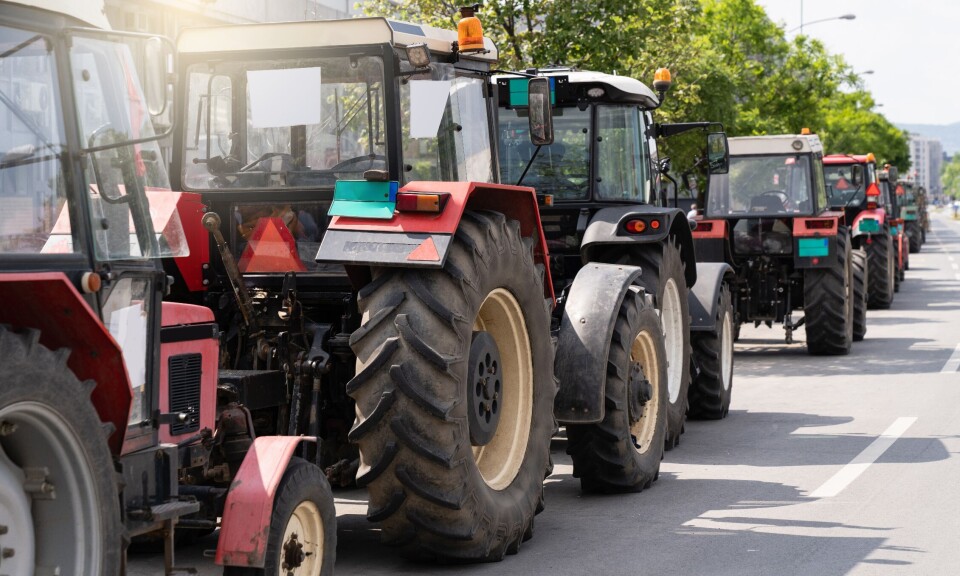Small-town France fights against being used as Waze shortcut
Many drivers use apps to bypass main road congestion but the increased traffic causes problems
Mayor Michel Bisson has sought solutions for traffic jams in his town Lieusaint in Seine-et-Marne
Mairie de Lieusaint
Many mayors are frustrated by drivers using their towns and villages as shortcuts to avoid busy main roads, based on suggested routes provided by the popular navigation app Waze.
The Waze app has become essential for many drivers making their way to popular tourist spots on unfamiliar roads or looking to scrape a few minutes off their daily commute to work.
It warns drivers where they risk getting bogged down in traffic and recommends alternative routes to save them time.
Read more: Why GPS apps will not always suggest the fastest route in France
Shortcuts through villages
However, in many cases it directs drivers down shortcuts through tiny villages.
This is the case for the village of Saint-Montan with 180 residents, which reports 1,000 vehicles a day through its narrow streets from spring to autumn, causing “monster jams” as people leave the A7 motorway and head towards the Gorges de l’Ardèche.
On weekends, bank holidays and pont days from April 1 to September 30, the town of Valence, in Drôme, has put a barrier across a country road on the Lautagne plateau that is commonly suggested by Waze and Google Maps.
Residents complained of traffic jams, including many cars with foreign number plates, every time the A8 was busy.
The road goes past homes and a primary school.
One resident said: “It wasn’t just cars, it was trucks, campervans, caravans…”
Read more: What are the best road maps to use in France?
Towns fight back
At Bègles, near Bordeaux, the mairie had to change the commune’s street plan, creating new one-way streets to help manage the overload, cutting traffic by 16% with 2,700 fewer vehicles per day.
Similarly, the mairie of Lieusaint, Seine-et-Marne, has put traffic lights near the town entrance that only work in the morning rush hour and, using a sensor, only when the traffic reaches a certain level.
Mayor Michel Bisson said: “The Francilienne [Ile-de-France ring road] borders our commune and in the morning, when the traffic is very heavy, you can bypass a part of it by crossing our town, to rejoin it a bit further along – it allows you to gain six minutes.
“These apps might be handy, but they direct people based on the journey time so they then cross towns whose infrastructure was not intended to deal with such major traffic flows.
“They have been crossing residential areas at around 8:30 to 9:00 when parents were taking children to primary school, other children were going to the collège and other residents were heading out to work.
“The traffic gets congested and buses take ages to get to the station. It generates lots of problems with daily life.”
He added: “We’ve been working with residents to find solutions including new no-through roads or one-way roads and lights in places where they can slow traffic down and increase the time it takes to cross the town, to put people off.
“These ideas have had their effects. Making the traffic stop at the new lights gave breathing space to the residents, who could leave their homes with less difficulty. But it’s not been enough to completely solve the underlying problems.”
‘Apps need civic responsibility’
He said the mairie has also asked Waze, which is owned by Google, if it could at least indicate on the app streets that have schools, and which it is therefore preferable to avoid.
Mr Bisson said Waze agreed to this but that he does not know if it has been applied.
The mairie also talked to mapmakers who make the street maps the app uses, to ensure they have applied the correct classification to its roads, from 7 for a motorway to 1 for a local lane.
“All this helps, but app companies need to have more sense of civic responsibility and social and environmental dimensions.
“It’s not enough for them to just indicate the fastest route from A to B – and probably also with commercial interests in mind, such as sending people along routes with restaurants.”
A Waze spokesman said: “Waze helps drivers navigate more safely and conveniently. It routes users using the public roads infrastructure, based on local driving laws and the legal road signs in the area.”
According to the firm, public roads are by their nature accessible to everybody, residents or not. If councils change a road’s status, it is accounted for on the app within days.
It also says it has safety features such as highlighting crash-prone roads or hazards such as potholes
More speed cameras
Speeding in villages is another common problem. Following complaints from residents, Nointel, Oise, is petitioning to reinstate a speed camera that was wrecked by gilets jaunes in 2019.
Read more: Can apps such as Waze show location of speed cameras on French roads?
Three communes in Drôme have clubbed together to buy a €7,000 mobile speed camera for the local police.
A 12-year-old has also reportedly installed a fake speed camera outside the family home in Cours-de-Pile, near Bergerac in Dordogne.





























